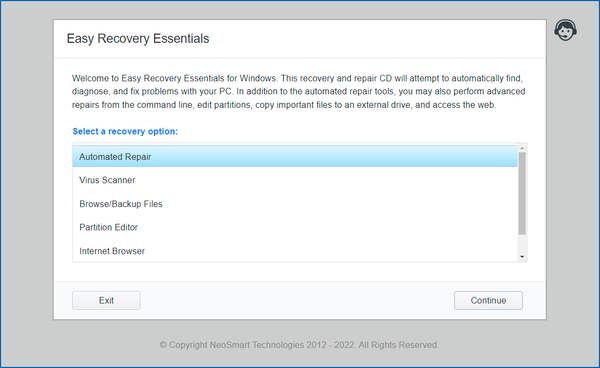 I’m happy to announce that a new version of
I’m happy to announce that a new version of size, the PrettySize.NET port for rust, has been released and includes a number of highly requested features and improvements.
The last major release of the size crate was 0.1.2, released in December of 2018. It was feature complete with regards to its original purpose: the (automatic) textual formatting of file sizes for human-readable printing/display purposes. It would automatically take a file size, pick the appropriate unit (KB, MB, GB, etc) to display the final result in, and choose a suitable precision for the floating numeric component. It had support for both base-10 (KB, MB, GB, etc) and base-2 (KiB, MiB, GiB, etc) types, and the user could choose between them as well as override how the unit was formatted. In short, it did one thing and did it right.




 NeoSmart Technologies is pleased to announce the immediate availability of the latest additions to its Easy Recovery Essentials™ for Windows line of bootable repair and recovery tools for Microsoft Windows: EasyRE for Windows 11 and EasyRE Pro for Windows 11. Continuing a tradition that started with Windows 10, our Windows 11 boot recovery USB is currently available as a completely free download for anyone that needs to fix their Windows 11 installation after a virus infection or a Windows Update gone wrong.
NeoSmart Technologies is pleased to announce the immediate availability of the latest additions to its Easy Recovery Essentials™ for Windows line of bootable repair and recovery tools for Microsoft Windows: EasyRE for Windows 11 and EasyRE Pro for Windows 11. Continuing a tradition that started with Windows 10, our Windows 11 boot recovery USB is currently available as a completely free download for anyone that needs to fix their Windows 11 installation after a virus infection or a Windows Update gone wrong.
 Windows 11 is here and it comes with a new version of Segoe UI Emoji, the font that’s used across the OS to render various emoji from Unicode codepoint sequences to the emoji you see on screen (developers:
Windows 11 is here and it comes with a new version of Segoe UI Emoji, the font that’s used across the OS to render various emoji from Unicode codepoint sequences to the emoji you see on screen (developers: 

